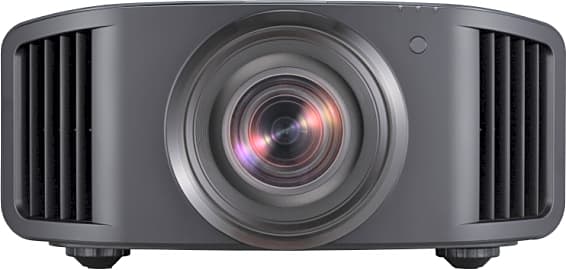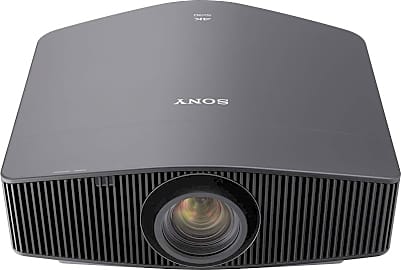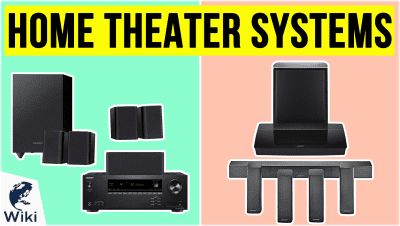The 10 Best 4k Projectors

This wiki has been updated 37 times since it was first published in May of 2015. If you want the full cinema experience in the comfort of your own home, then you need a high-quality 4K projector. Of course, the current cost of these means that only true cinephiles will be likely to want one. But for the average consumer who just likes to have a great home movie night, we have also included a few that use shifting technology to mimic 4K definition and come in at a lower price. When users buy our independently chosen editorial choices, we may earn commissions to help fund the Wiki.
Editor's Notes
December 18, 2020:
There have been a few exciting upgrades in this category since we last visited it, with my personal favorite being the JVC DLA-NX9. It's a bit pricey, and not everybody thinks the technology is ideal, but they've taken the shift tech they used to employ to make a projector with a native 1080p output project in 4K and applied it to a model with a native 4K output. The result is a viewing experience that is essentially upscaled to 8K resolution, allowing you to project a massive screen without losing detail.
Another exciting update came in the Optoma CinemaX P2 Smart, which has one of the highest contrast ratios in the business, coming in at 2,000,000: 1. This model also boasts one of the best sound systems in its class, with a pair each of drivers and woofers supporting a stereo output without the need for a single piece of home theater equipment.
May 22, 2019:
The short throw Sony model that previously held our number one spot has been demoted to number five, but only because that company's newer long throw model now represents the top of its line, and because the models that fell in the three spots in between are simply better deals given what users will get for their money. The Epson model at number two, for example, is a slight upgrade to the 4000 model previously at number seven, but it performs remarkably better than its predecessor without its price going up very much. And the LG tower at number four is one of the most conveniently portable projectors on the market. The biggest loser on our list is the JVC model that once held the second spot and is now all the way back at number seven. Again, this has less to do with a failing in the projector's performance (its contrast ratio is still one of the finest in its class), and more to do with the rest of the industry catching up to or surpassing it at competitive prices.
In Digital Projection, Mirrors Make The Difference
On the other hand, it’s because the scientific minds that designed your projector knew that your eyes couldn’t tell the difference.
Mirror technology has come a long way since that dastardly reflective consultant to the Wicked Queen of Snow White. And while somewhere along the way we lost the ability to interact with our mirrors on a personal or prophetic level, we have harnessed other incredible capabilities from mirrors that we've made exceedingly small.
In a digital projector, for example, the light that constitutes your image bounces off of an array of incredibly tiny mirrors called a Digital Micromirror Device before hitting the lens that provides its ultimate focus. Those mirrors, shaped like little squares, are usually only five micrometers across. A micrometer, for the record, is one millionth of a meter.
Despite their diminutive stature, the mirrors inside the DMD don’t add up to the same number of pixels present in the intended image. A 4K projector puts out an image that should contain 8,294,400 pixels, but the average DMD only contains half that many mirrors. On the one hand, this is because it’s rather expensive to produce millions of flawless, microscopic mirrors. On the other hand, it’s because the scientific minds that designed your projector knew that your eyes couldn’t tell the difference.
Thanks to phenomenon called wobulation, these projectors only need to supply you with about half of the necessary information in a given frame, as the projection itself moves on to the next frame before your mind could ever catch up. It’s also convenient for their manufacturing costs that the human brain’s frame rate is shamefully slow, even compared to the 24-frame-per-second speed of the cinema.
Home Sweet Home Theater
Fewer people than ever seem interested in going to the movies. Between the drive, the parking lot, the lines, and the prices, it often makes more sense to stay home. Positive blips in the numbers shouldn't fool you; the industry is in trouble. Every once in a while there will be a good year, bolstered by successive successes among the major studios' big tentpole franchises like Star Wars or Jurassic Park, but these are anomalies within a consistent downward trend. With those few major exceptions, no one can accurately predict what new properties will have any degree of success.
Know what you want to use your projector for going into the purchase, and you'll get the most out it for years.
That uncertainty leads, unfortunately, to a steep rise in ticket and concession prices. So, more and more people are upgrading their home theater systems to provide them with the kind of moviegoing experience they used to look for down on Main Street.
Which isn't to say these projectors are only meant for movie lovers. Television broadcasts of sports and well-made shows look fantastic on them, especially when played on those units with an upscaling feature to make the most of your 4K streams while we wait for the market and local internet speeds to catch up to 8K resolution. And gamers absolutely love a good projector for the available depth of detail in its blacks.
Some projectors will handle games better than others, however, and others are better suited for high-resolution cinema print transfers. Know what you want to use your projector for going into the purchase, and you'll get the most out it for years.
Projection Born In Darkness
To understand where modern projection began, one must reach back almost 2,500 years to the Chinese philosopher Mozi, who made the first known recorded reference to the camera obscura. This device, which lets light in through a very small hole, concentrates and redirects it onto a makeshift projection surface, could be as small as a shoebox or the size of an entire room.
About 150 year later, digital image recording revolutionized the industry, leading to a new wave of technologies.
Take the idea of a periscope, or a child's toy spy glass that lets you see around corners, and you have an idea of how the camera obscura works. Those two examples rely on an eyepiece, where the original designs of the camera obscura let their mirrors reflect the image onto a flat plane like a wall of wood or stone.
Eventually, innovators experimented with the means for preserving the images cast on these surfaces, and gave birth to film photography. About 150 year later, digital image recording revolutionized the industry, leading to a new wave of technologies.
Really, if you follow the path that light travels through a modern digital projector, not a whole lot has changed since those early days. We're just using more concentrated, more powerful light sources, inverting the initial image so that it appears upright when projected, and we have an enormous amount of microscopic little mirrors instead of one single mirror that sends the image through precision lenses.















